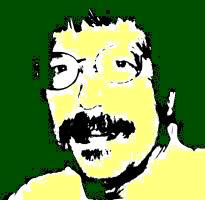The title is from a presentation I gave on Friday, June 18, to the SUNY Librarians Association Conference.Below are brief summaries for my main points and links for additional resources. Feel free to leave comments, and especially any questions you would like to be answered.
The framework for this treatment of intellectual integrity is the 3 Directions Model. And this presentation is a case study of how a basic skill can gain meaning for the student when it is placed into the context of learning and participation in scholarship.
Our Challenge as Information Literacy EducatorsIs our job is to teach correct citations? Or is it to teach that:
•Intellectual integrity is participation as a person with other persons to advance knowledge in communities of practice?
•Sources are ultimately persons who represent their knowledge in books and articles—and learners are ultimately persons?
My own answer, stated more fully in the "3 Directions" article, is to elevate the learning beyond the mechanics of citation and to guide students into disciplinary communities of practice. Each community will have its own rules and conventions, but each academic discipline shares something of the core practices of scholarship.
My use of "persons" reflects an emerging sense on my part that in a world of social networking everything becomes more personal and less institutional even as elements of our institutions variously crumble, linger, or re-emerge with more vigor and power. I will have to explain this more in a later post, when I've figured it out.
Pedagogical Challenge: What is the biggest cognitive hurdle that students’ face? What attitude or belief keeps them from engaging with the learning goals? This is a critical step in the planning phase of instructional design.
For our students at Oswego, we have identified this as the pedagogical challenge:
•Research is collecting and reporting facts, and citations are only needed for quotes from books and articles.
We have tried to address this challenge with concept number 1 below.
Guidepost ConceptsIn order to rise above the explication of skills and detailed rules we need to identify the concept tools that students will find useful for years, the kinds of things that are pervasive and are likely to persist for years. These can serve as guideposts or landmarks regardless of whatever notions the APA and MLA editors get in their heads.
1.At the heart of research is the building of new knowledge on the basis of older knowledge. Citations to sources identify you as a scholar, highlight the elements that are your original work, and place your work into the context of a discipline.
2.Cite others work whether you quote, paraphrase, summarize or borrow ideas from the work, and regardless of the media or format of the work.
3.A citation will usually include author, title, and publication information. The layout and format of the citation will vary by discipline and by the media or format of the cited work.
Show and DoInstead of explicating things that are better absorbed through practice than through listening we try to show (make the practice clear and transparent) and ask the students to do (put the concepts into action and application).
- In our Lake Effect Research Challenge (LERC) we point out Author/Title/Publication information at every turn, whenever a results list or bibliography appears.
- Each of the “Finding” sections for books, articles and websites in turn feed into how to cite and provide an opportunity to review why and how to cite. Each how-to page merely lists the elements important to the specific format and provides an example of a citation in APA and MLA style. The author/title/publication landmarks are highlighted in each example.
- The Challenge worksheet requires a citation for a book, an article, and a website.
Our first year students have a number of chances to use the tutorial and almost all first year students must complete at least one research assignment with citations.
Thread into the CurriculumTo make integrity a pervasive part of college culture we have to move out beyond library instruction to first year students. Library and classroom faculty both need to:
- Point out the presence or lack of a bibliography for every source.
- Note bibliography as a primary formal marker for scholarship.
- Review citation style for the discipline.
- Talk about intellectual integrity, connecting citation to good scholarly practice.
To help with this at Oswego we have devoted an entire row of our Information Literacy Outcomes matrix to integrity and other values related to use of library and information resources. This matrix is being used as a guide to assessing learning and designing instruction.
In league with an online teacher and an instructional designer I created the "Good Learning Versus Plagiarism" tutorial, which has been used in a number of courses in a variety of ways to emphasize intellectual integrity. The Good Learning tutorial with an accompanying quiz is offered to every online course at Oswego for the instructor to use in any way that suits them. The 'founding' online teacher requires that every student pass the quiz with a perfect score (multiple submissions are allowed) before progressing beyond the first few weeks of the course.
This past year the Oswego Committee for Intellectual Integrity expanded on the Good Learning tutorial and rebuilt the quiz bank. The tutorial is now part of the "Intellectual Integrity Site" along with materials from the Colby, Bates, and Bowdoin Plagiarism Resource
Site. The effectiveness of the latter materials was validated in research by Dee and Jacob (Dee, T. S., & Jacob, B. A. (2010).
Rational ignorance in education: A field experiment in student plagiarism (No. 15672). NBER Working Paper Series. National Bureau of Economic Research. Retrieved from
http://www.swarthmore.edu/Documents/academics/economics/Dee/w15672.pdf)
Online ObjectsLake Effect Research ChallengeInformation Literacy Learning Outcomes (the matrix).
Good Learning Versus PlagiarismIntellectual Integrity Site, SUNY Oswego
